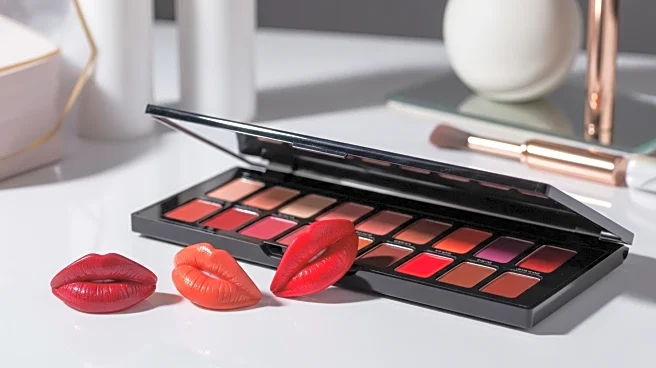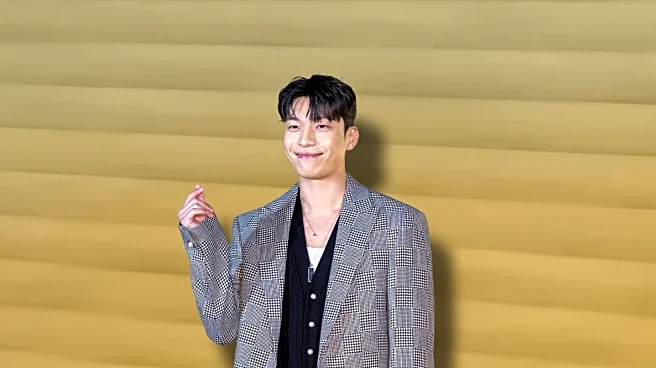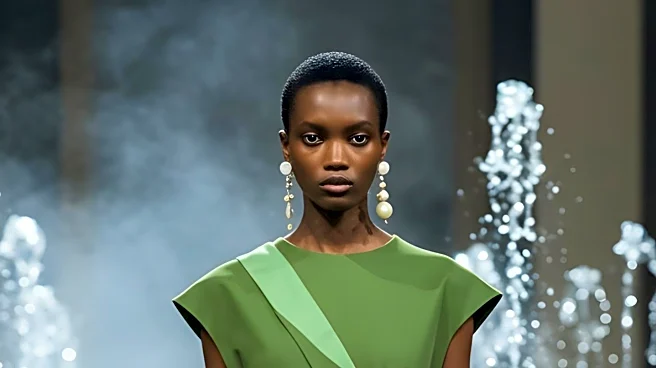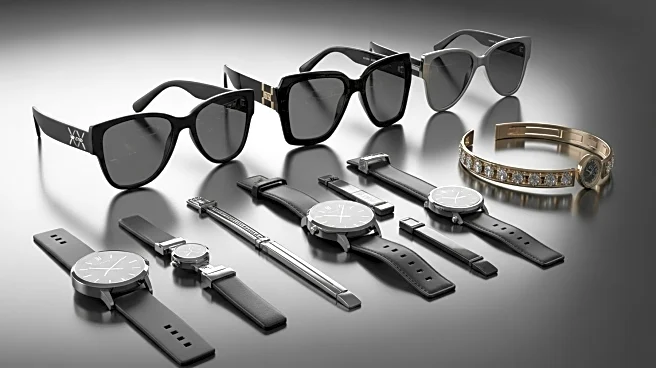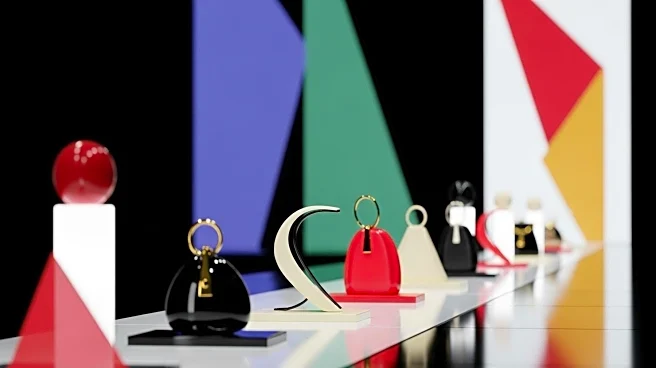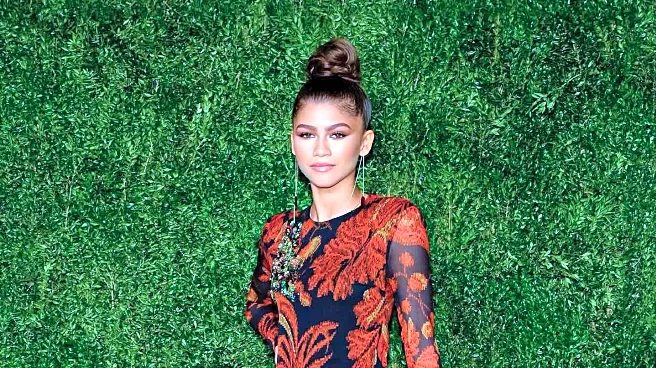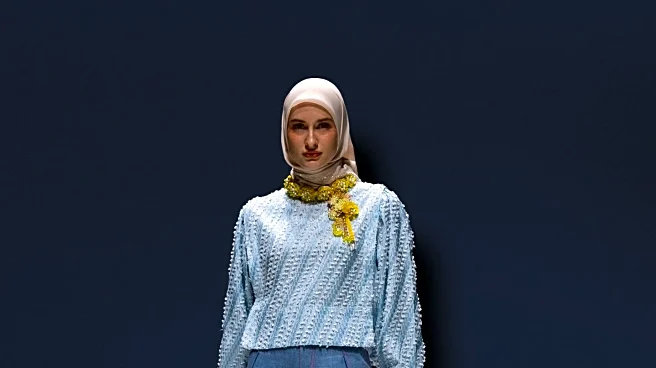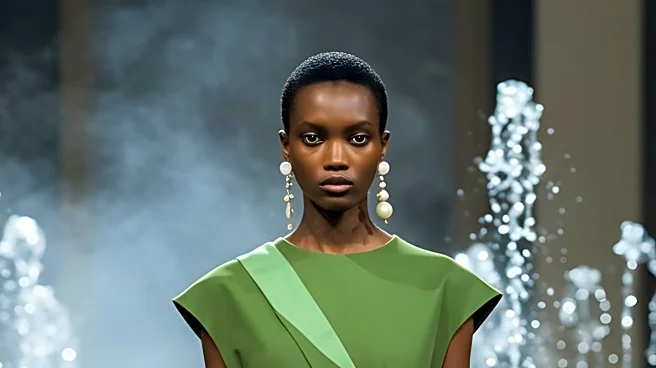What's Happening?
Acne Studios presented its Spring/Summer 2026 collection, showcasing a blend of masculine and feminine elements. Designer Jonny Johansson drew inspiration from the trend of sheer dressing, creating a collection that challenges traditional gender norms. The collection featured oversized blazers in treated leathers and suedes, paired with high-rise jeans and masculine footwear like cowboy boots. Johansson incorporated cut-out garments with photographic images by artist Pacifico Silano, and corseted womenswear with lace patches, offering a critique on gender-defined dressing. The show was set against a backdrop resembling a cigar box, with a soundtrack by Swedish artist Robyn.
Why It's Important?
The collection by Acne Studios highlights the ongoing conversation around gender fluidity in fashion. By blending traditionally masculine and feminine elements, the collection challenges conventional gender norms and reflects a broader societal shift towards inclusivity and diversity. This approach not only appeals to a wider audience but also positions Acne Studios as a forward-thinking brand in the fashion industry. The use of art and music further enhances the narrative, making the collection not just about clothing, but a statement on cultural and social dynamics.
What's Next?
As the fashion industry continues to evolve, brands like Acne Studios are likely to further explore gender fluidity in their designs. This trend may influence other designers to adopt similar approaches, potentially leading to a more inclusive fashion landscape. The reception of this collection could also impact future collaborations and partnerships, as brands seek to align with the values of diversity and inclusivity.
Beyond the Headlines
The collection's critique of gender norms through fashion raises questions about the role of clothing in shaping societal perceptions of gender. By using fashion as a medium for social commentary, Acne Studios contributes to a larger dialogue about identity and self-expression. This approach not only challenges traditional fashion norms but also encourages consumers to rethink their own perceptions of gender and style.



